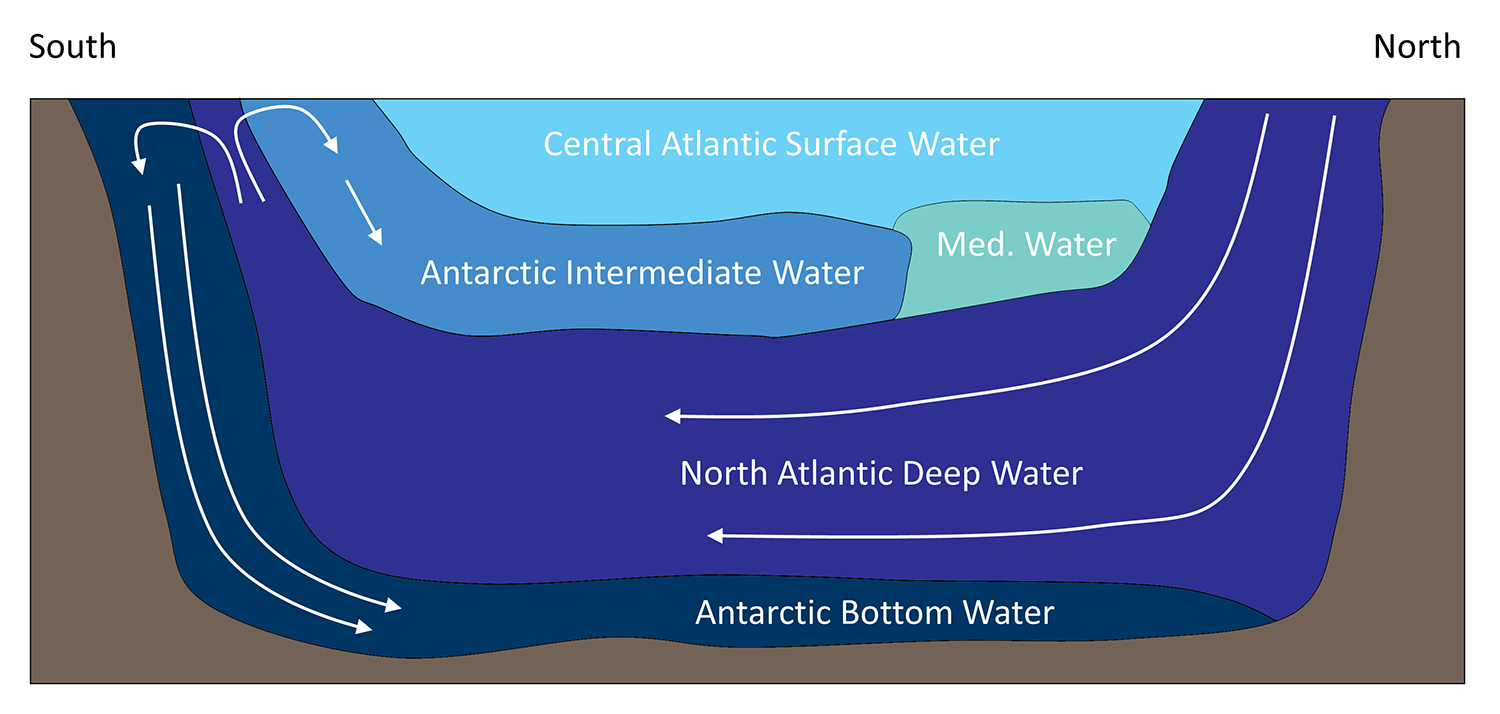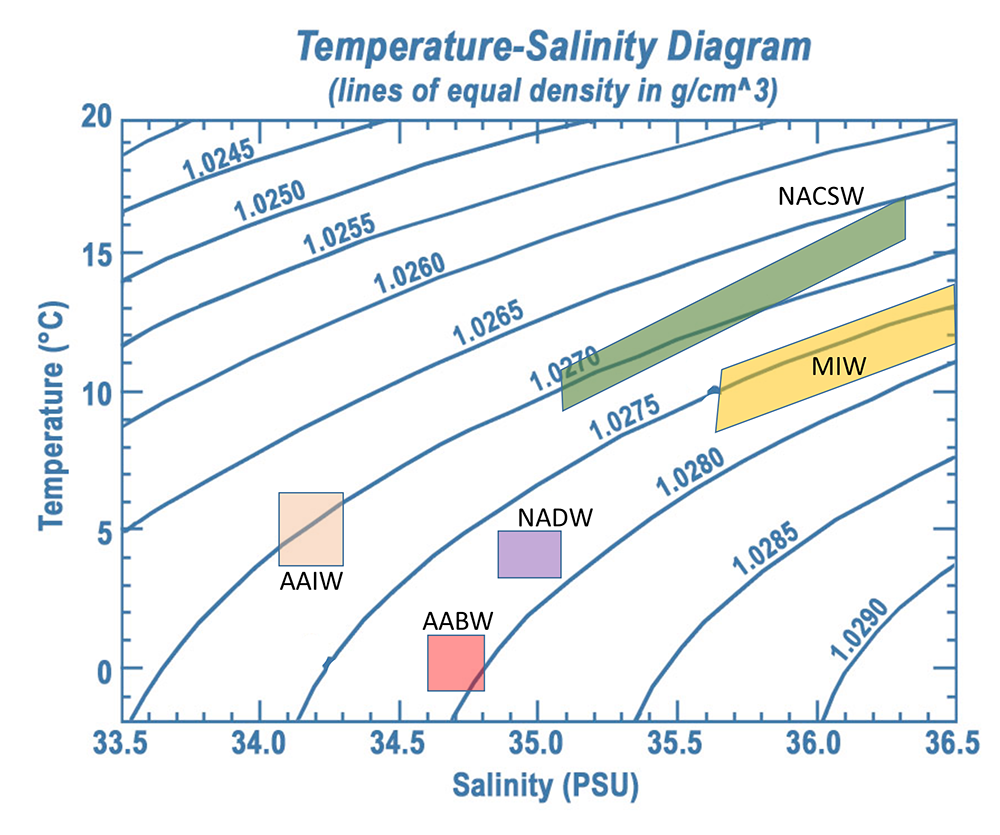Atmosphere & Ocean Circulation
Week
GEOS 3410
🪑
Week Schedule
Tuesday
- Wrap up atmospheric forcings
- Troposphere circulation
- Ocean circulation
Thursday
- Ocean circulation, cont…
- Climate connections
Outside of class
- Reading and questions for Lab 5 on Thursday
- Lab 2/3 due 11:59 pm on Thursday
Energy imbalance → meridional heat transfer

COMET / MetEd / UCAR, via Giannotti 2013
Energy imbalance → meridional heat transfer

PW (1015 W)/ degree latitude
Physics Refresh
Temp. & Pressure
 Move from Phigh → Plow
Move from Phigh → Plow
 Move from Phigh → Plow
Move from Phigh → Plow
Temp. & Density
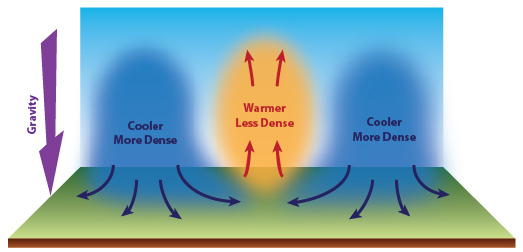
(buoyancy)

(buoyancy)
Conservation of momentum
$$ \circ \rightarrow $$
(inertia)
Don't need to note these unless you could use the reminder :)
Circulation on a sphere
Motion on a rotating reference frame
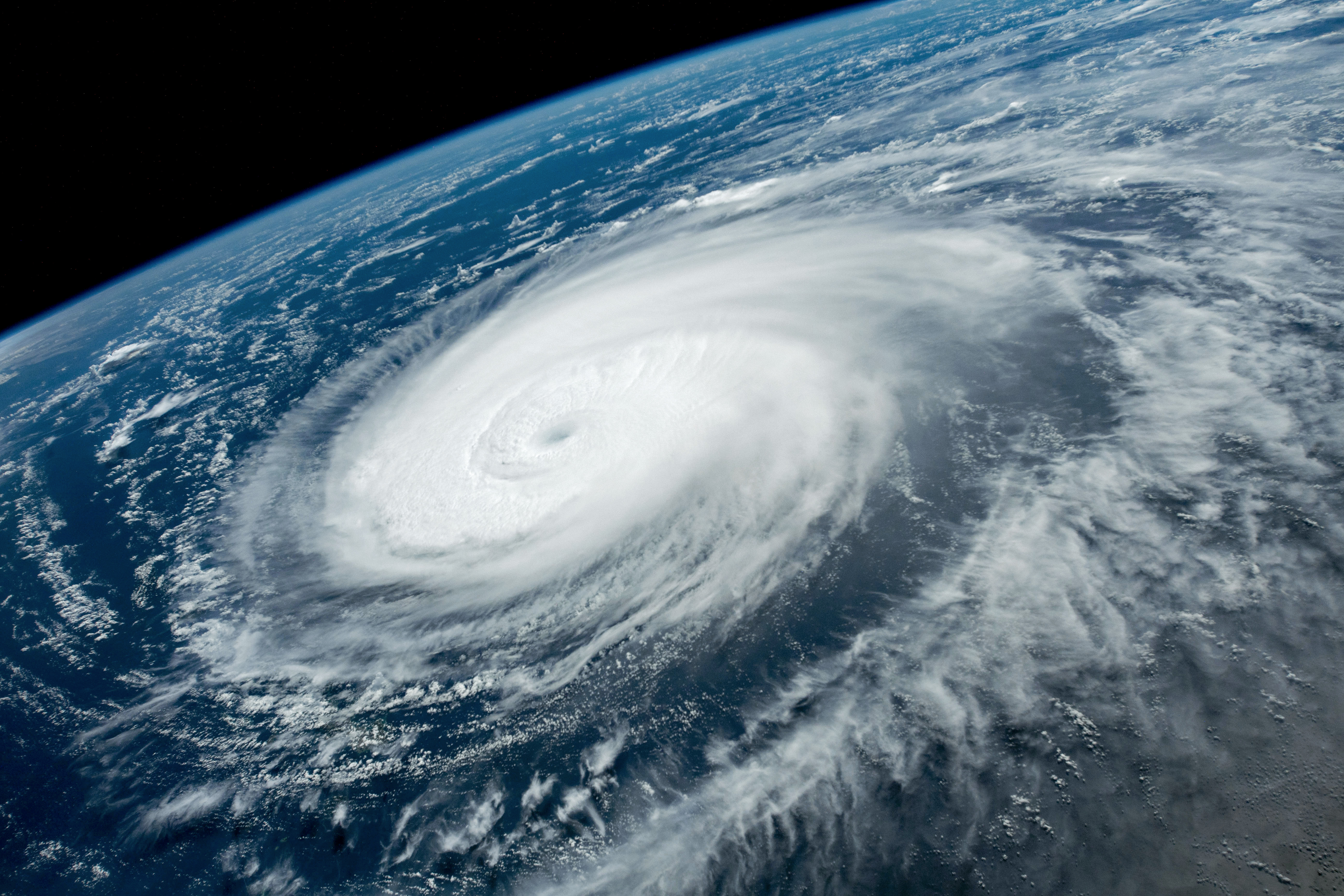
Coriolis Force
An inertial force that acts on objects traveling in a rotating reference frame.(conserves momentum)
Coriolis in action (2D)
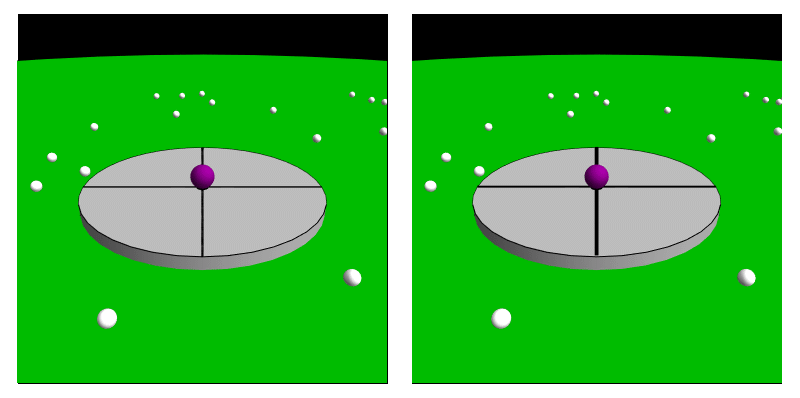
Coriolis on Earth (rotating W→E)
| Hemisphere | Path veers… |
|---|---|
| Northern | Right |
| Southern | Left |
Hemispheric differences in storm systems
Northern Hemisphere
(counterclockwise)
(counterclockwise)
Southern Hemisphere
(clockwise)
(clockwise)

Cyclone = low-pressure system
Finally, it all makes sense…
🌀🚽🌀
🌀🚽🌀

Interhemispheric toilet flushes are all controlled by bowl morphology. Why?
Circulation on a rotating sphere
Intertropical Convergence Zone (ITCZ)

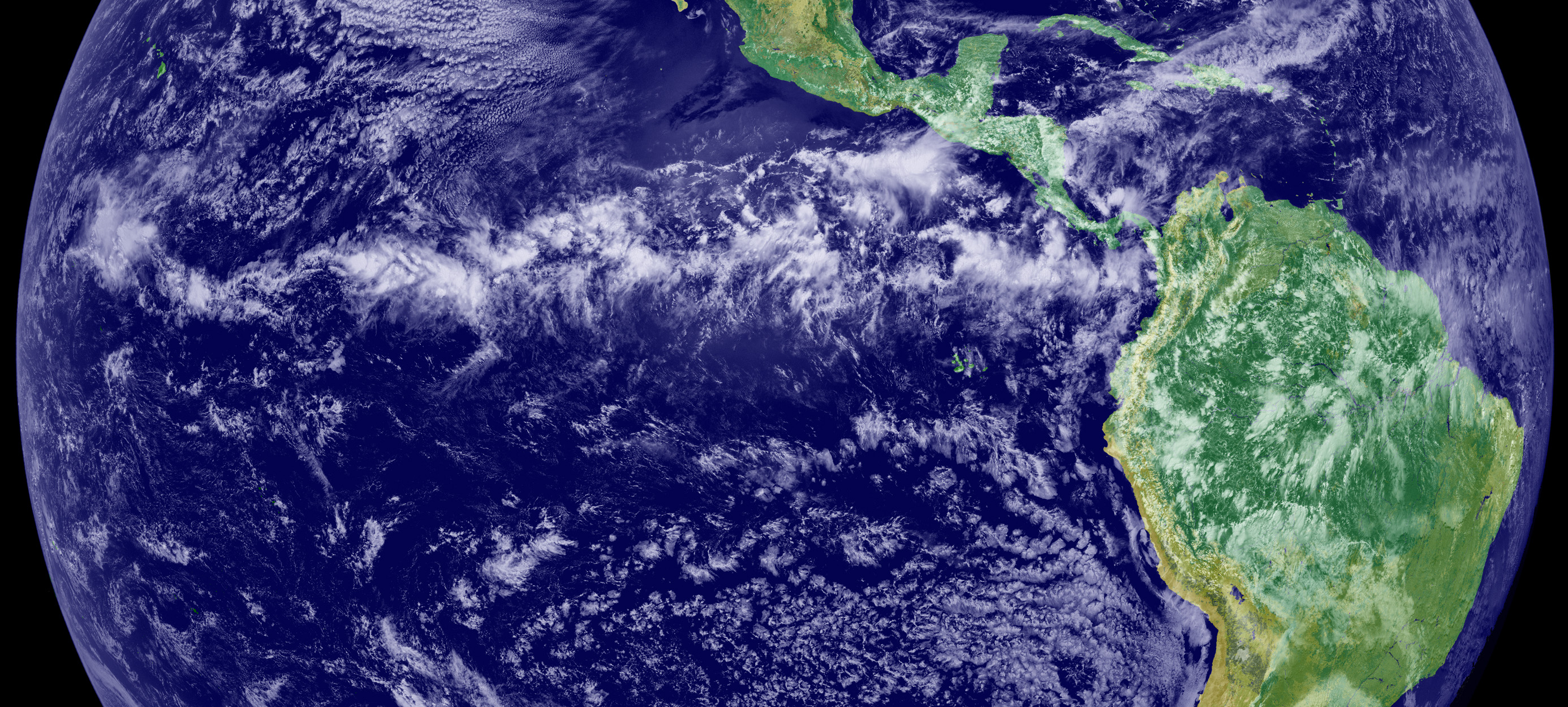
Horse latitudes (±30°)
Polar cells & the polar front
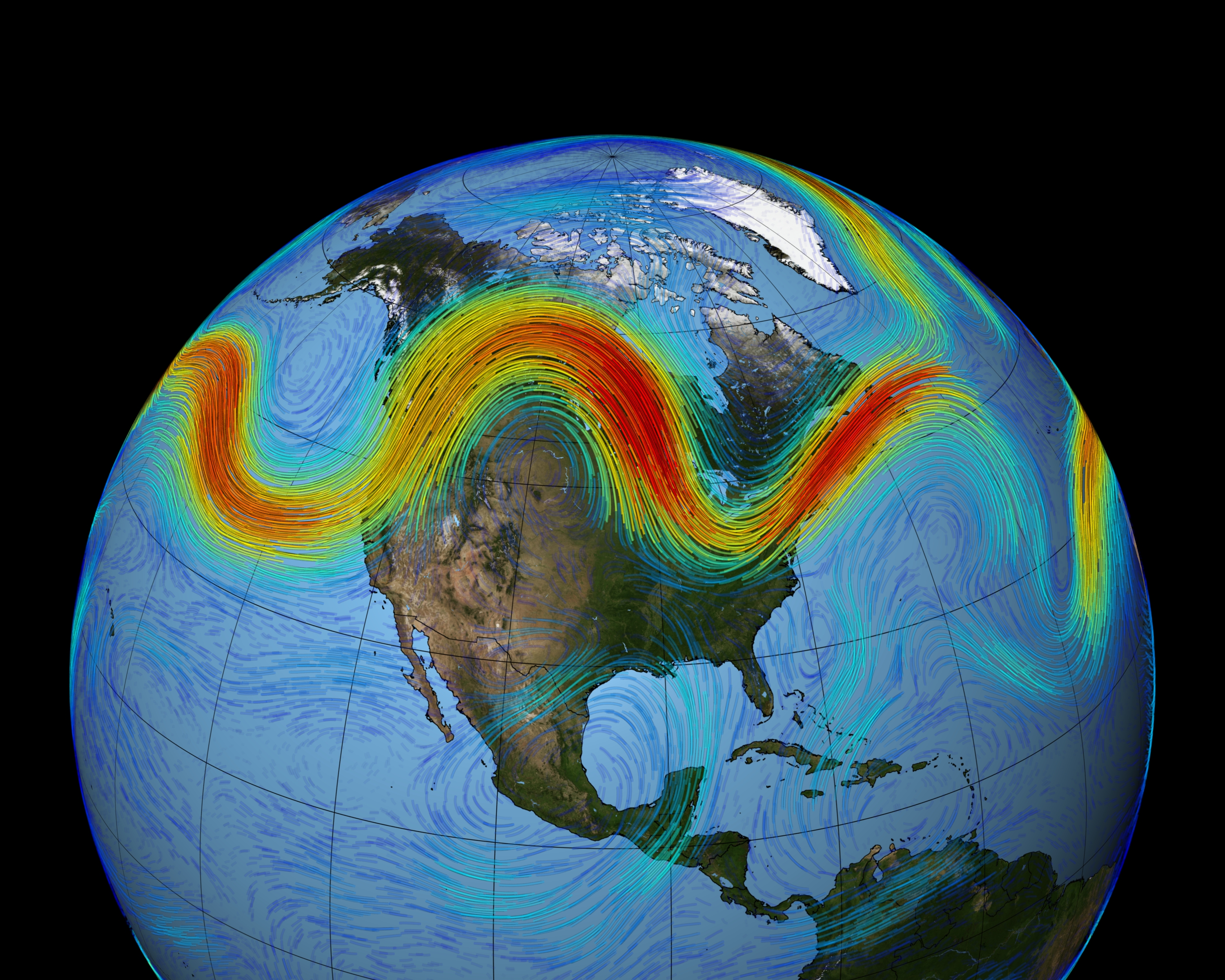
More on this next week!
All together now — Tropospheric circulation

You should be prepared to construct this from first principles…
Convection stops at the tropopause (usually)
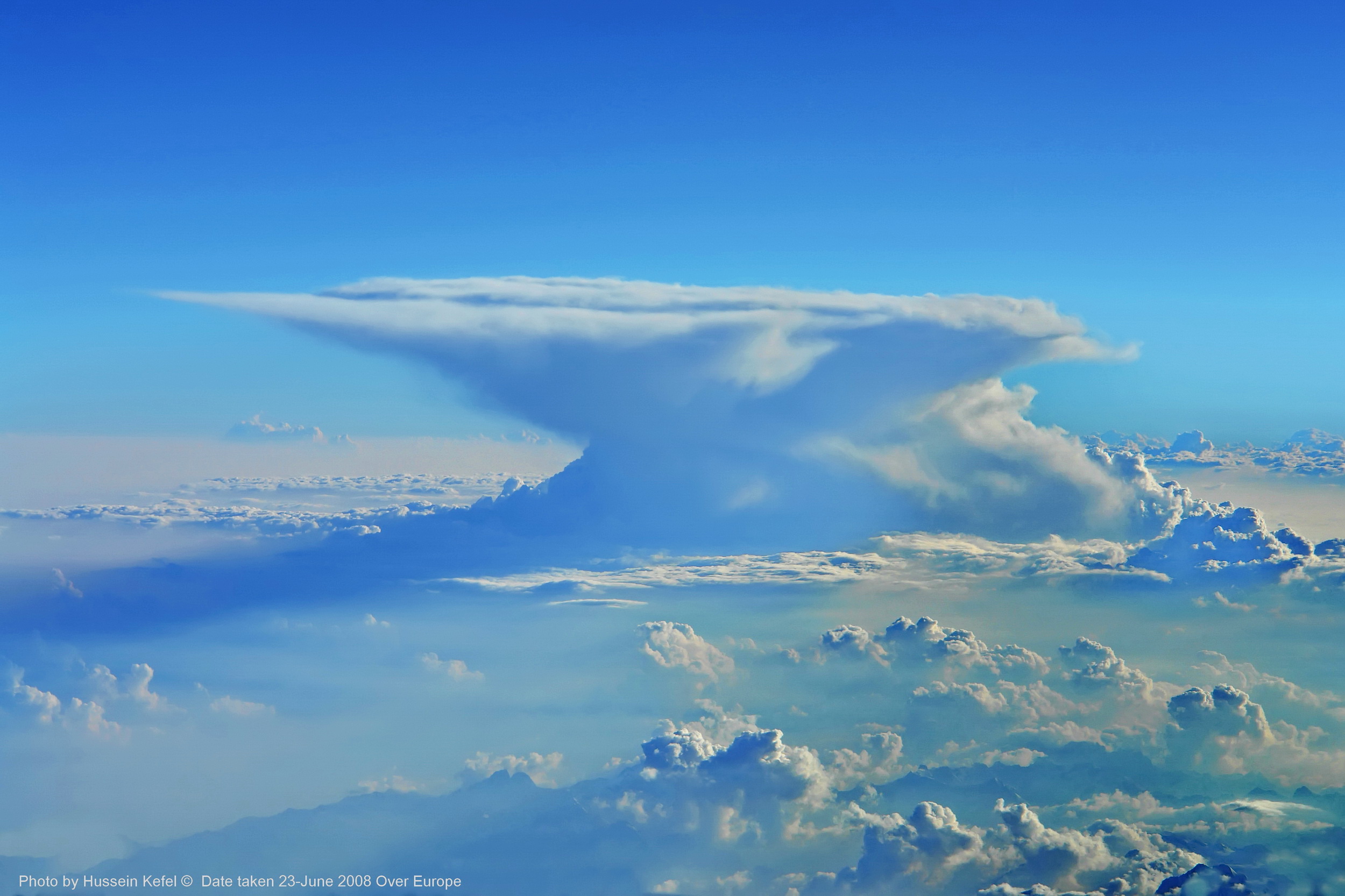
Image: Hussein Kefel
Tropopause height decreases with latitude

More on jet streams next week!
Ocean circulation: surface
Wind – friction → ocean surface
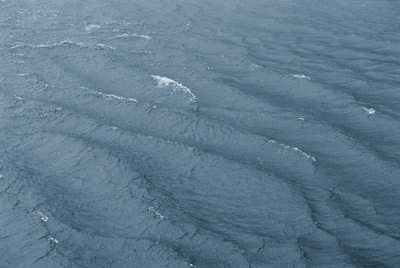
↗ wind direction ↗
Gyres
Large-scale ocean surface transport
Balance of wind-driven surface transport, coriolis effect, and gravity.
Ekman transport
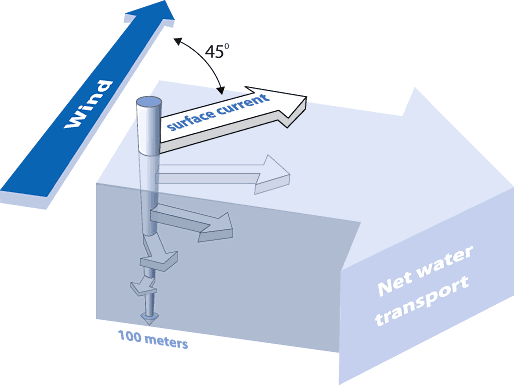
(Northern Hemisphere)
- Wind-driven transport of surface water, friction between water layers, and Coriolis force.
- Ekman layer: depth from surface to reversed flow (~100 m depth)
- Net transport in Ekman layer is orthogonal (90°) to wind.
Ekman transport in the subtropics

Geostrophic Balance
pressure gradient = Coriolis force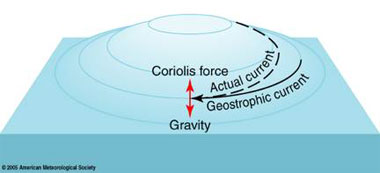
Geostrophic flow is the horizontal movement of surface water arising from a balance between the pressure gradient force and Coriolis force
Sketch 5 subtropical gyres

Homework
Add two subpolar gyres in the Arctic and try to figure out the Southern Oceanhint: focus on the southern Westerlies (the polar easterlies are more coastal)
Sea surface elevation

Are gyres symmetrical?
Gulf Stream

The gulf stream carries 55 sverdrups (1 Sv = 106 m3/s)
Currents & eddies
Surface current: pronounced limb of a gyre
Eddies: small-scale, chaotic, temporary turbulent circulation associated with currents. The ocean version of weather.
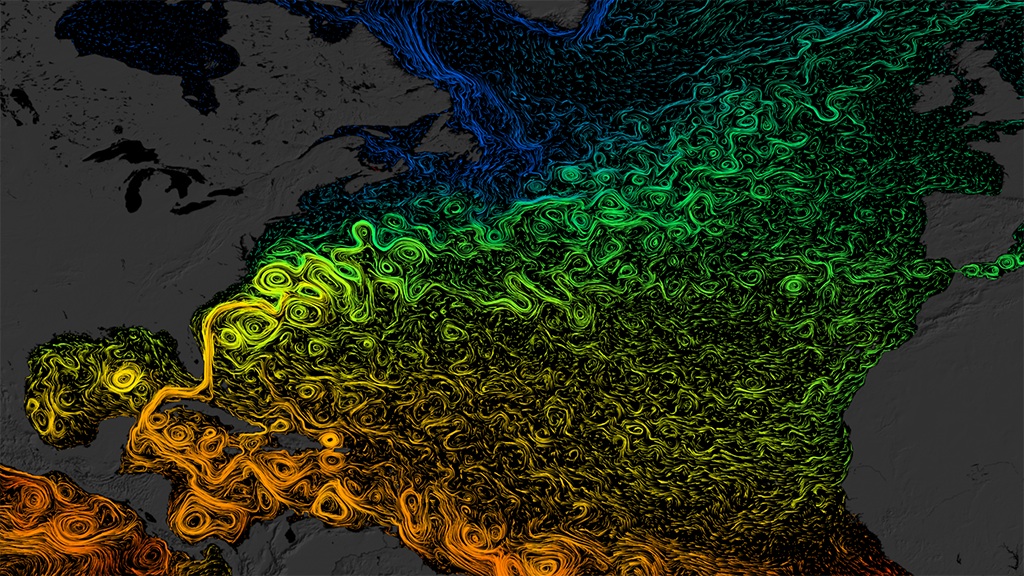
Gulf stream (current) and eddies.
NASA, see also: Perpetual Ocean
Ocean circulation: sea surface to sea floor
Temperature – Salinity – Density
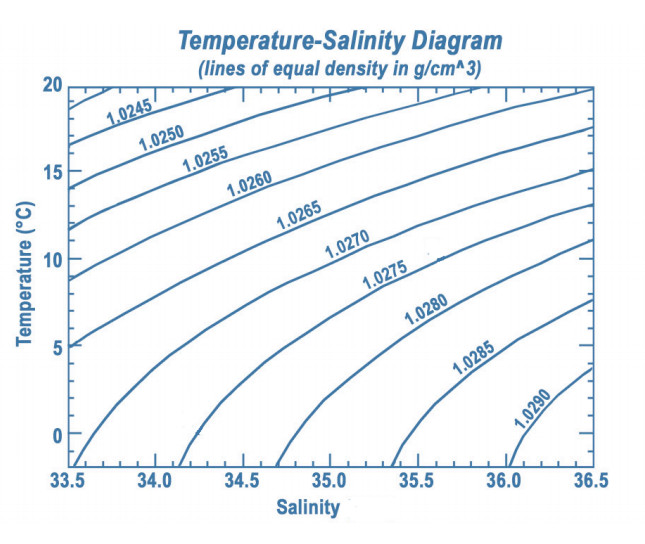

The ocean is stably stratified

Sea surface salinity (SSS)
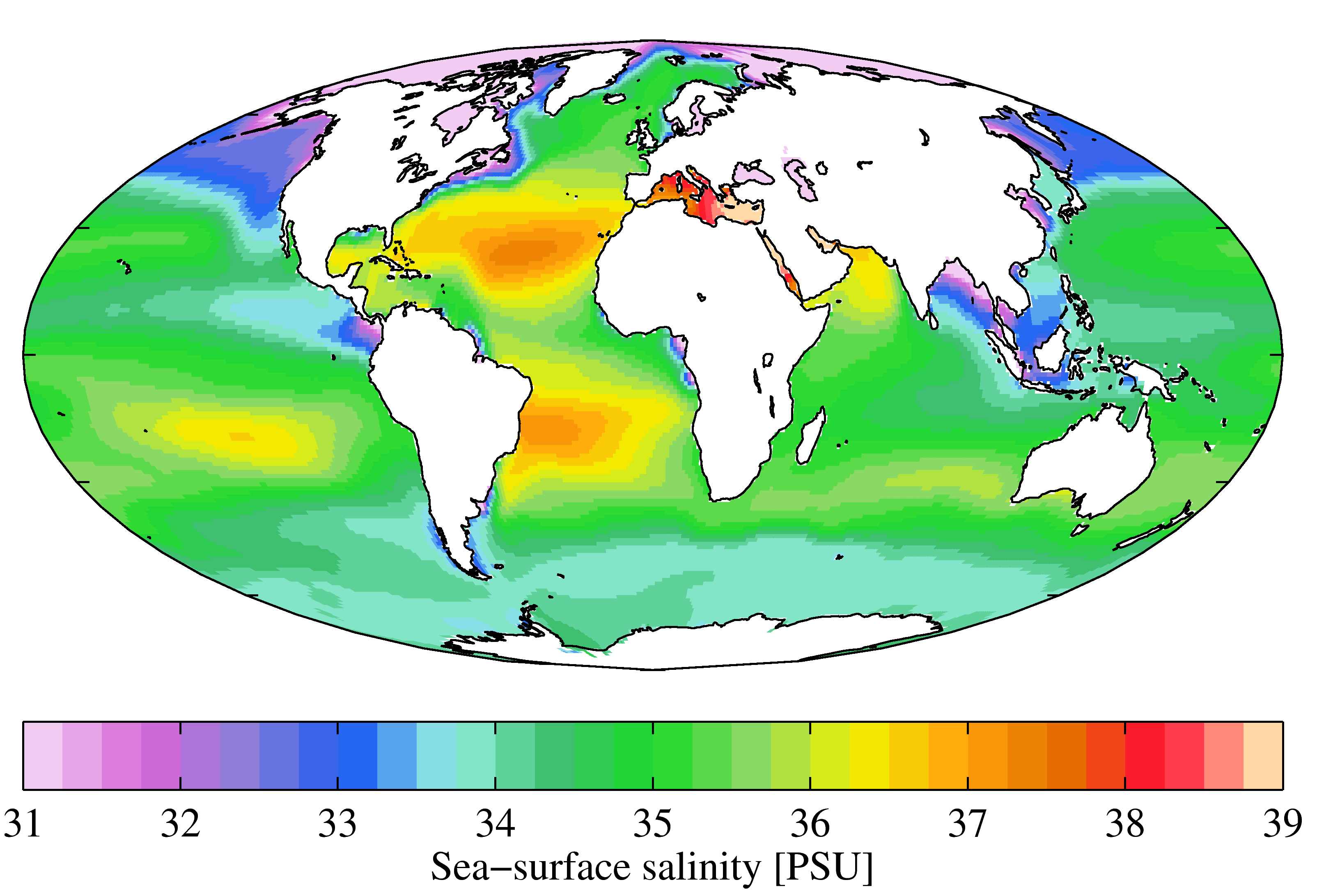
Practical salinity units (PSU) = g salt/kg water
Gulf Stream

The gulf stream carries 55 sverdrups (1 Sv = 106 m3/s)
Gulf stream → North Atlantic Current
Gulf stream → North Atlantic Current
→ North Atlantic Deep Water (NADW)
Bathymetry controls deep water paths
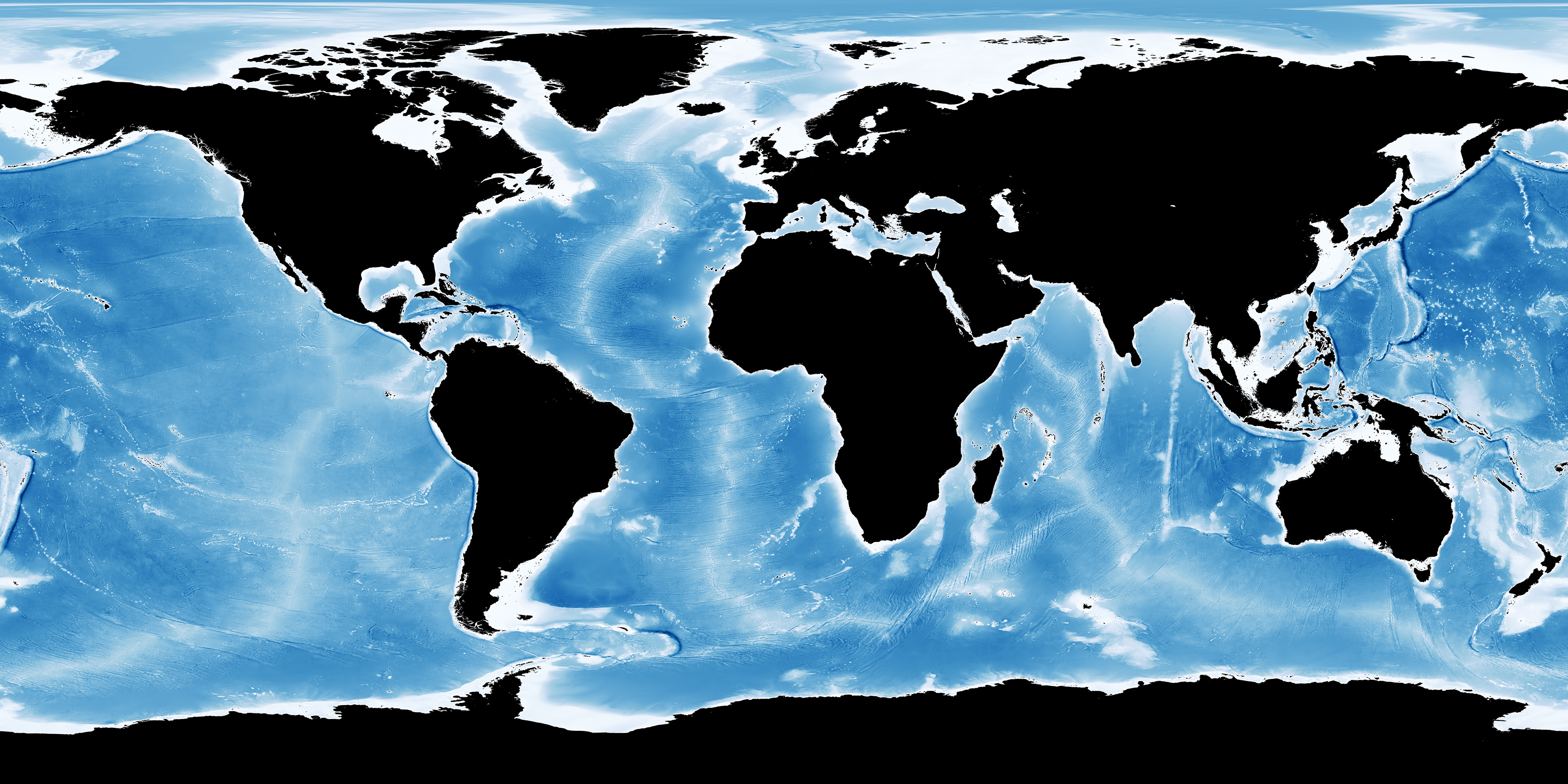
Atlantic Meridional Overturning Circulation (AMOC)
Atlantic Meridional Overturning Circulation (AMOC)
Atlantic Meridional Overturning Circulation (AMOC)
Hydrographic profile of salinity
(dashed lines trace boundaries between water masses, disregard labels)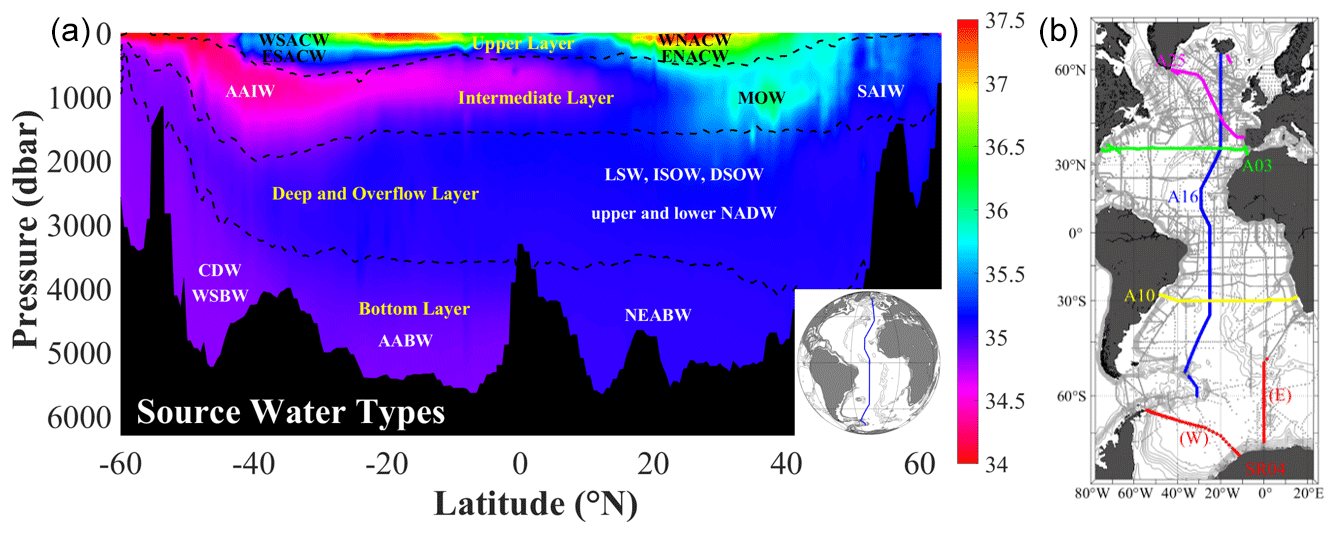
Atlantic Meridional Overturning Circulation (AMOC)
Hydrographic profile of temperature
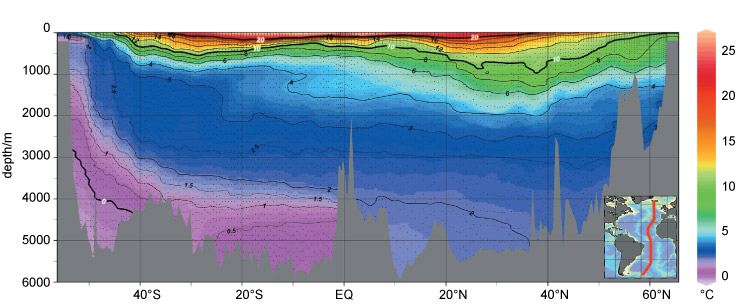
Sub-freezing AABW temperatures?
Bathymetry controls deep water paths

Thermohaline Circulation (THC)
 Works like a conveyer belt constrained by bathymetry.
Works like a conveyer belt constrained by bathymetry.
Timescales of thermohaline circulation
- NADW flows at ~1 cm/s, carries ~20 Sv (Sverdrup = 106 m3/s)
- Typical NADW residence time of 100-600 years (Liu+Tanhua)
- Slower in the Pacific
- Typical deep ocean residence time >1000 years
The role of thermohaline circulation in the climate system
Warm North Atlantic climates
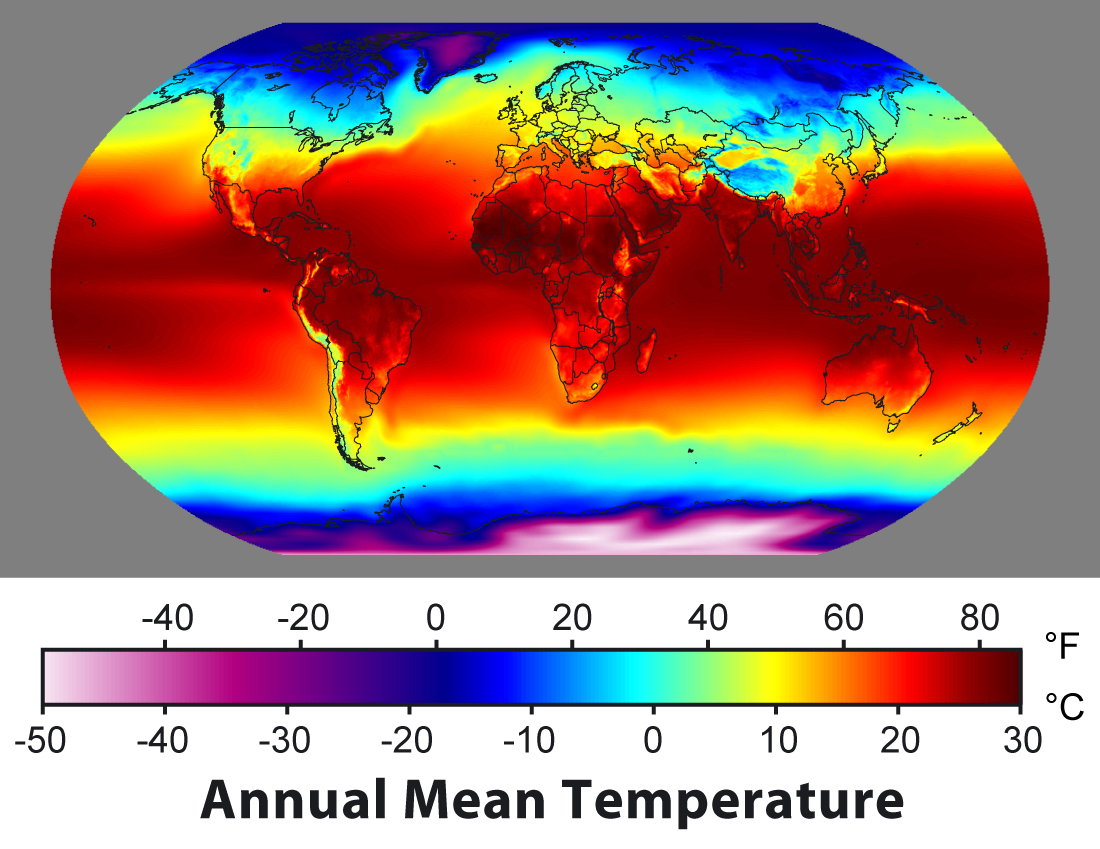
What happens when THC weakens?
What happens with enhanced flux of freshwater in North Atlantic?
Nutrient recycling

The biological pump
- Phytoplankton take up CO2 (DIC)
- Zooplankton eat phytoplankton and respire CO2
- DIC ↔ POC ↔ DOC
- Particles sink
- C trapped in deep ocean below ~1000 m (mesopelagic)
- THC returns deep C (+nutrients) to surface by "venting"
Carbon storage
The oceanic sink accounts for ~48% of the total fossil-fuel and cement-manufacturing emissions …
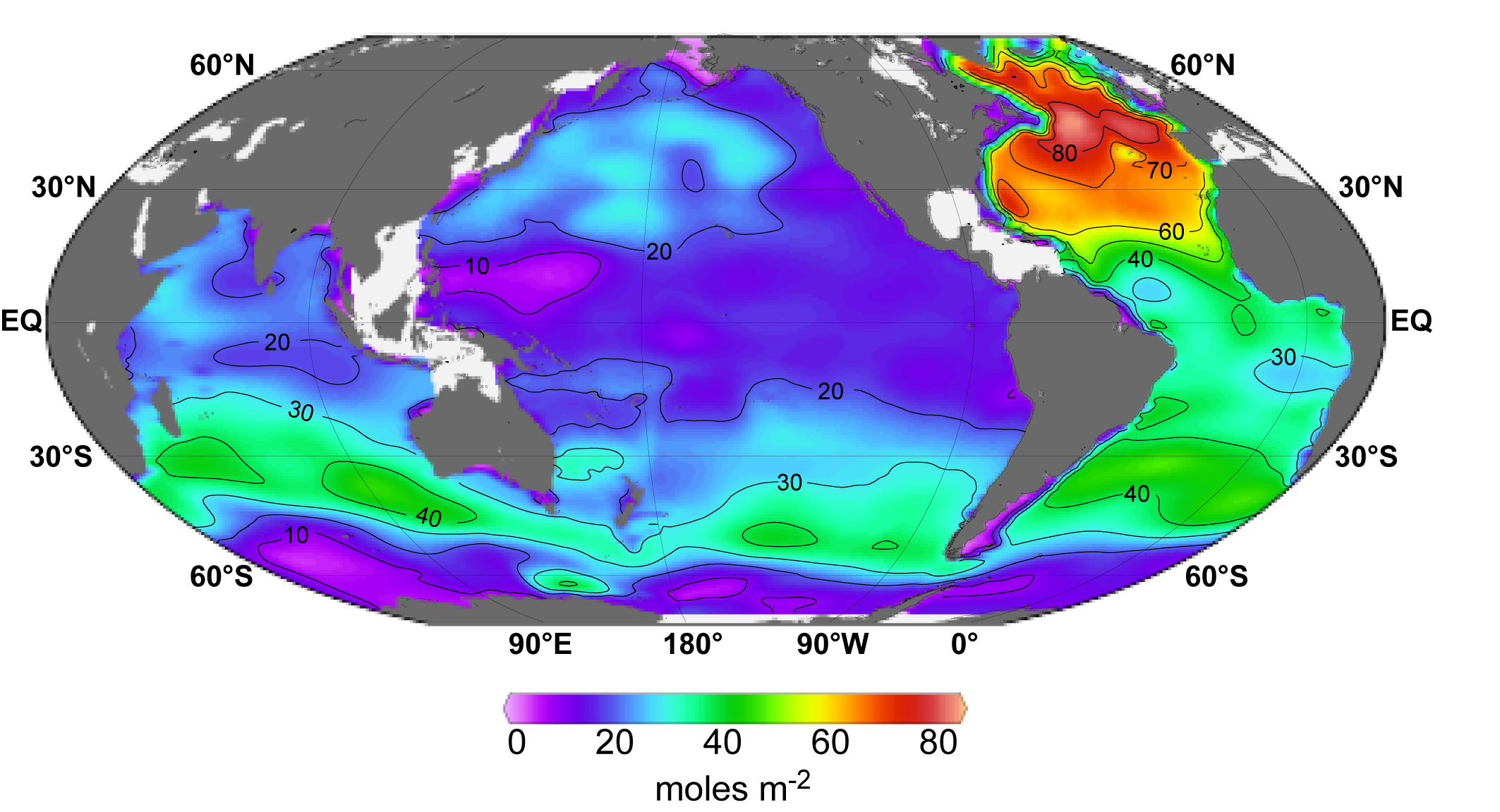
Projected carbon storage
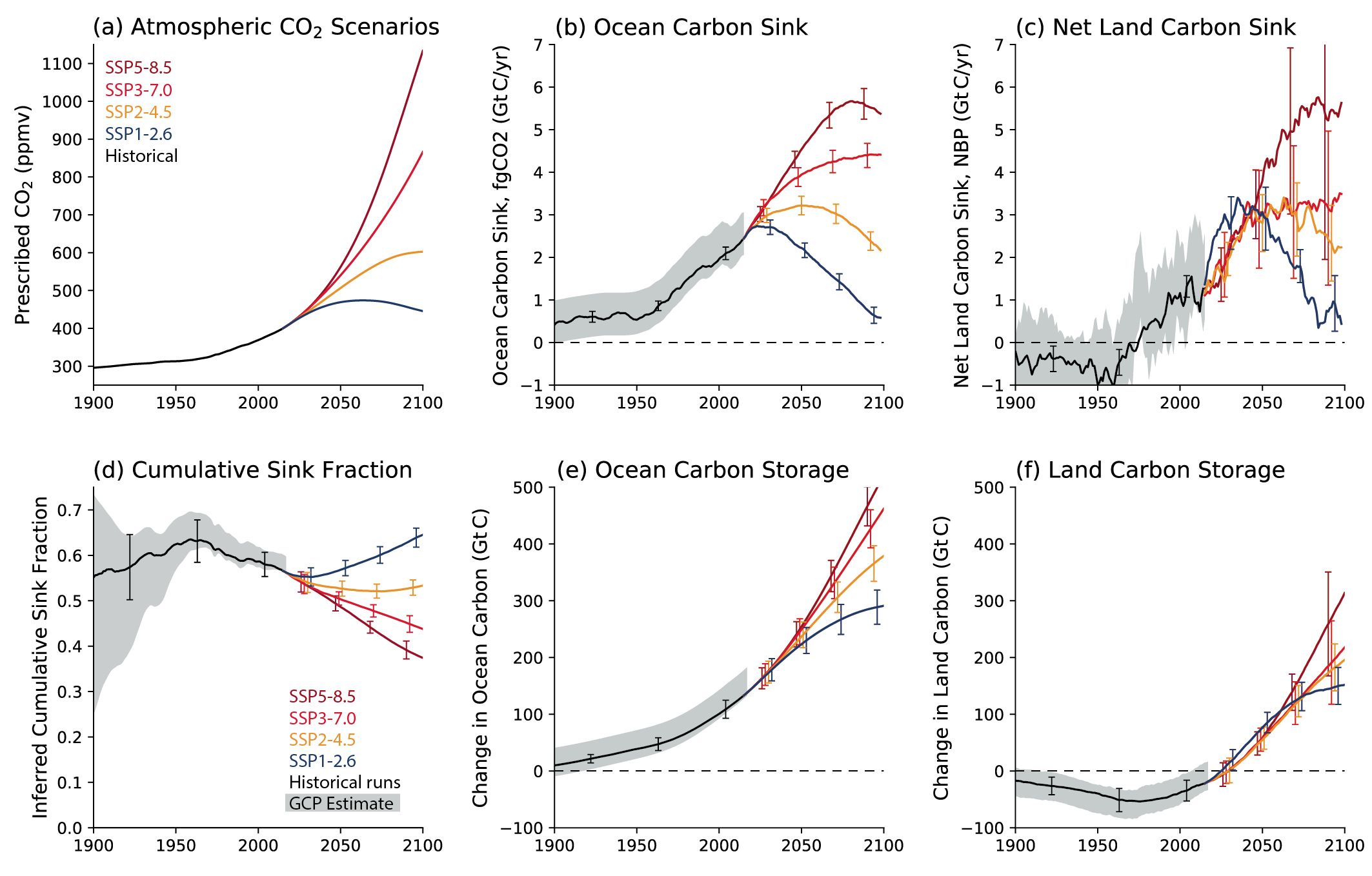
Heat storage

The ocean has absorbed ~90% of excess heat since the 1970s.
Thermohaline circulation will rise again when we talk about paleoclimate!
Lab this afternoon in MMS 273
Submit questions by 12:30 pmLab 2/3 due today by 11:59pm
Next Week ()
- Readings: Syllabus / Canvas
- 🌦️ Weather, climate oscillations, & teleconnections 🌦️
- Midterm Assessment I approaching (2 weeks)

 Dry upper troposphere falls and warms adiabatically
Dry upper troposphere falls and warms adiabatically

